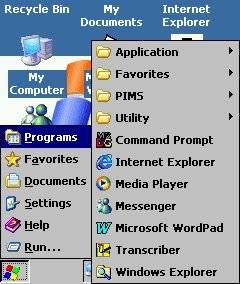
It was a proto-netbook, it was a palmtop, it was a PDA, it was Windows Phone 7 but not Windows Phone 8, and then it was an embedded ghost. It parents never seemed to know what to do with it after it grew up, beyond offer it up for anybody to shape in their own image. And then, earlier this month, with little notice, Windows CE was no more, at least as a supported operating system. Windows Embedded Compact 2013, better (but not popularly) known as Windows CE 8.0, reached end of support on October 10, 2023, as noted by The Register.
Windows CE, which had a name that didn’t stand for anything and was often compacted to an embarrassing “wince,” is not survived by anything, really. Remembrances have been offered by every Microsoft CEO since its inception and one former Ars writer. A public service for the operating system will be held in the comments.
The OS that fit in small spaces
Windows CE was initially Microsoft Pegasus, a team working to create a very low-power, MIPS or SuperH-based reference platform for manufacturers making the smallest computers with keyboards you could make back then. Devices like the NEC MobilePro 200, Casio (Cassiopeia) A-10, and HP 300LX started appearing in late 1996 and early 1997, with tiny keyboards, more-landscape-than-landscape displays, and, by modern standards, an impressive number of ports.

Pegasus arrived to most consumers as Windows CE 1.0, and, by all accounts, it had a lot of problems, at least if you were expecting it to be anything like Windows. The mobile OS couldn’t work with Microsoft’s Outlook, then a new addition to Office 97, until an update was shipped in March 1997, and it was still resistant to work with almost any other mail or personal information management (PIM) systems. Developers likewise didn’t find the platform too appealing, as it requires none-too-cheap Microsoft’s Visual Studio, Visual Basic, or Visual C++ tools, along with CE-specific module purchases.
By the time Ars Technica started mentioning Windows CE in 2003, it was well on its way to becoming Microsoft’s “Sure, we have an OS for that” solution. It was the embedded “Windows CE for Smart Displays” OS for a ViewSonic airpanel V150p, which let you remotely control a desktop from something that you might, at an angle, call a tablet. It was modified with “Windows XP extensions” to power a $250 AMD “Personal Internet Communicator” meant for “emerging markets” in 2004.
By the time it hit 5.0 in 2005, Windows CE was now also Windows Automotive 5.0, part of Bill Gates’ pledge to have “30 percent of cars” running Windows CE in them by July 2006. Gates did not hit this goal. Still, in mid-2005, Windows CE was installed in nearly half the PDAs sold, with most of its share having been clawed out of Palm’s clutches. Later that year, Palm announced that its newest device, the Treo 650, was running Windows Mobile.
https://arstechnica.com/?p=1979685

